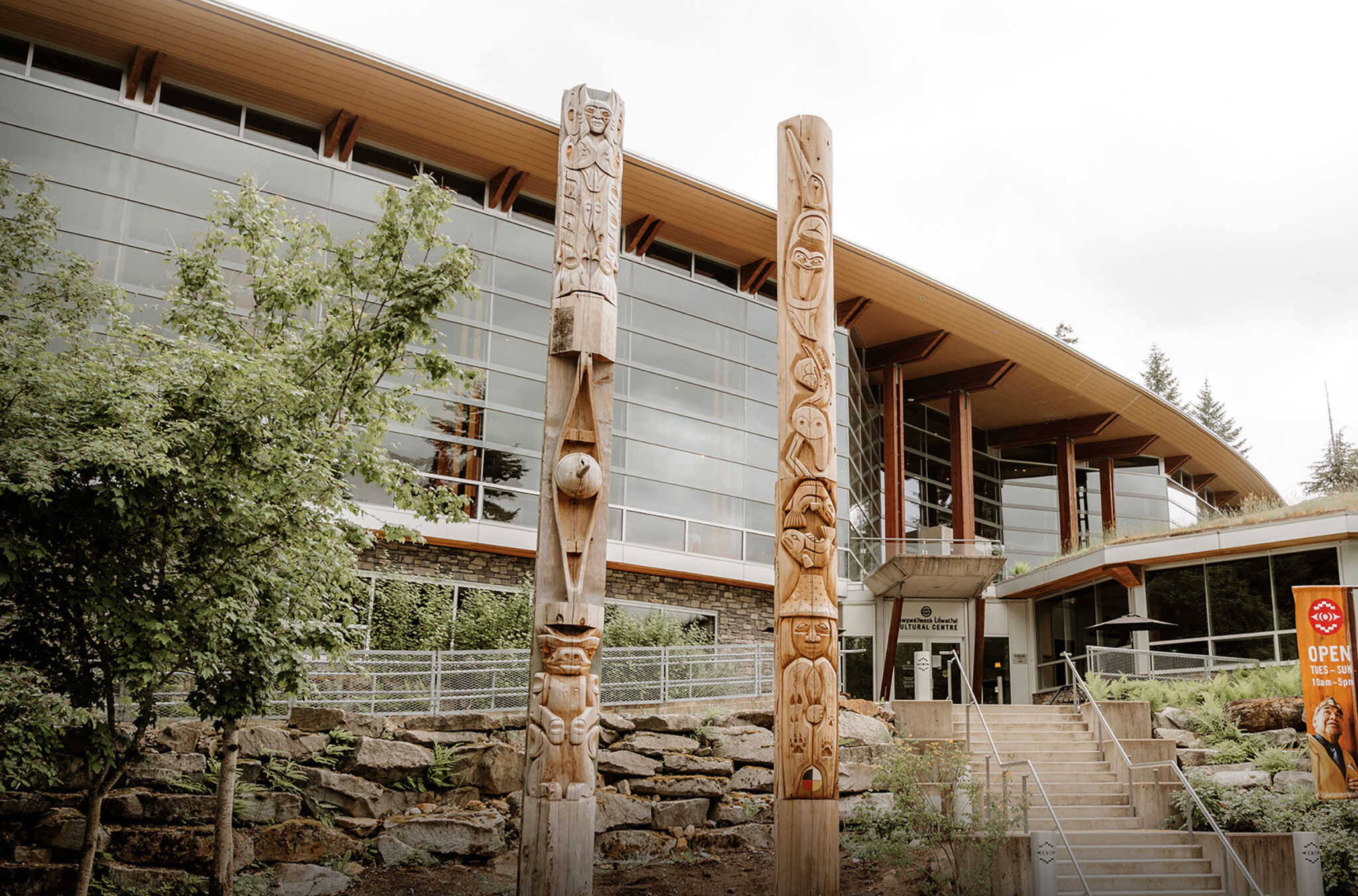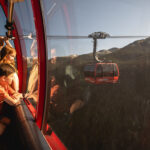The beat of the drum and the powerful voice of the Cultural Ambassador echo through the gallery. The welcome song bounces off a red cedar canoe, an intricately carved house post, and wool weavings hanging from the walls. The lush, green forest opposite the Centre feels part of it, thanks to the floor-to-ceiling glass wall, a visual reminder that the Indigenous people here were, and still are, intrinsically connected to the land.
The Sḵwx̱wú7mesh Líḻwat7ul Cultural Centre (Squamish Lil’wat Cultural Centre) is a celebration of culture, history, traditions and art, as well as a place to learn, contemplate and connect. And it’s a must-do when you visit Whistler.
What is the Squamish Lil’wat Cultural Centre?
The Squamish Lil’wat Cultural Centre (SLCC) showcases two First Nations communities, the Sk̲wx̲wú7mesh (Squamish) and Li̓l̓wat7ul (Lil’wat), who have coexisted respectfully as neighbours in this area since time immemorial.
The SLCC opened in July 2008, after the signing of a historic protocol agreement between the two nations (the first of its kind in Canada), to share their cultural knowledge and inspire understanding and respect amongst all people. The building is designed to evoke the longhouses of the Squamish people and the Istken (traditional earthen pit house) of the Li̓l̓wat7ul people, combined with a modern architectural interpretation.
Both the Sk̲wx̲wú7mesh and Li̓l̓wat7ul are caretakers of the land. Their history is tied to the rivers, lakes and mountains, and their culture is a reflection of that.
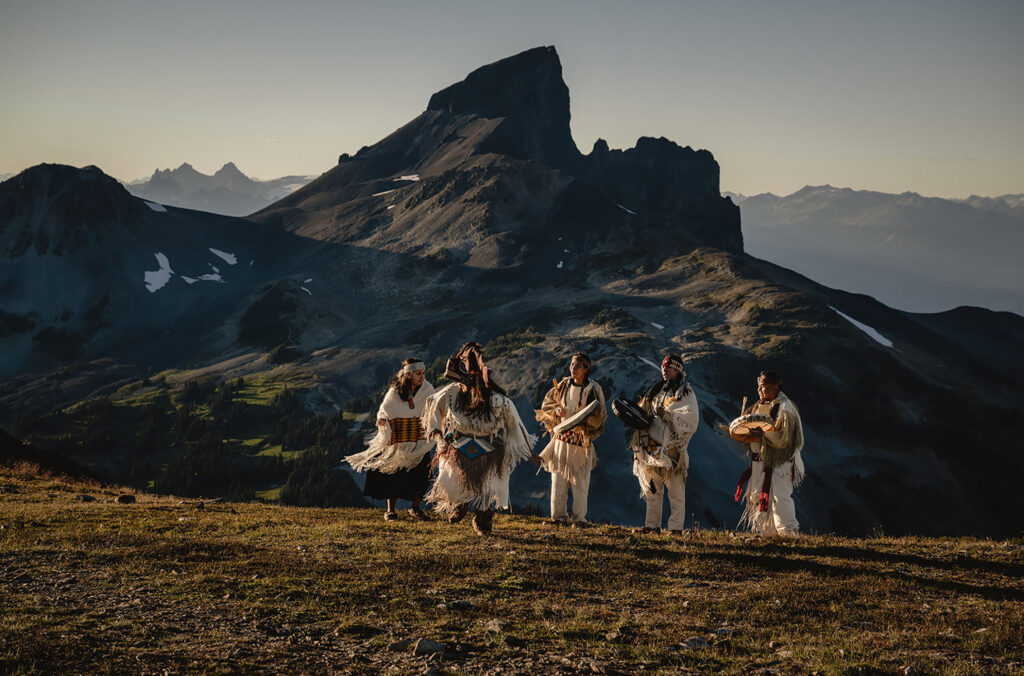
Squamish Nation
The Sk̲wx̲wú7mesh Úxwumixw, the Squamish People, are the descendants of the Coast Salish First Nations People that lived in present-day Greater Vancouver, Gibson’s Landing and Squamish, BC. There are about 4,000 members of the Squamish Nation.
They speak Sk̲wx̲wú7mesh Snichem, but the number of fluent speakers is extremely low. However, they are aggressive in bringing their language back to their youth. Their territory is 6,732 square kilometres, and the majority of it is by the ocean. Their clothing, food, housing and transportation have adapted to the temperate rainforest, and you’ll see examples of all of these at the Centre.
Lil’wat Nation
The Li̓l̓wat7ul are Ucwalmícw, which translates to “the people of the land”; they are one of 11 communities that form the St̓at̓yemc Nation. Their territory extends from Rubble Creek, north to Gates Lake, East to Upper Stein Valley and west to the coastal inlets of the Pacific Ocean, an area covering 7,911.31 square kilometres.
There are about 2,500 members of the Lil’wat Nation. They speak Ucwalmícwts, which translates to “the language of the land.” They are a mountain community; their territory is similar to what you see in Whistler. Their clothing, food, housing and transportation have adapted to the temperature change found in the mountain ranges.
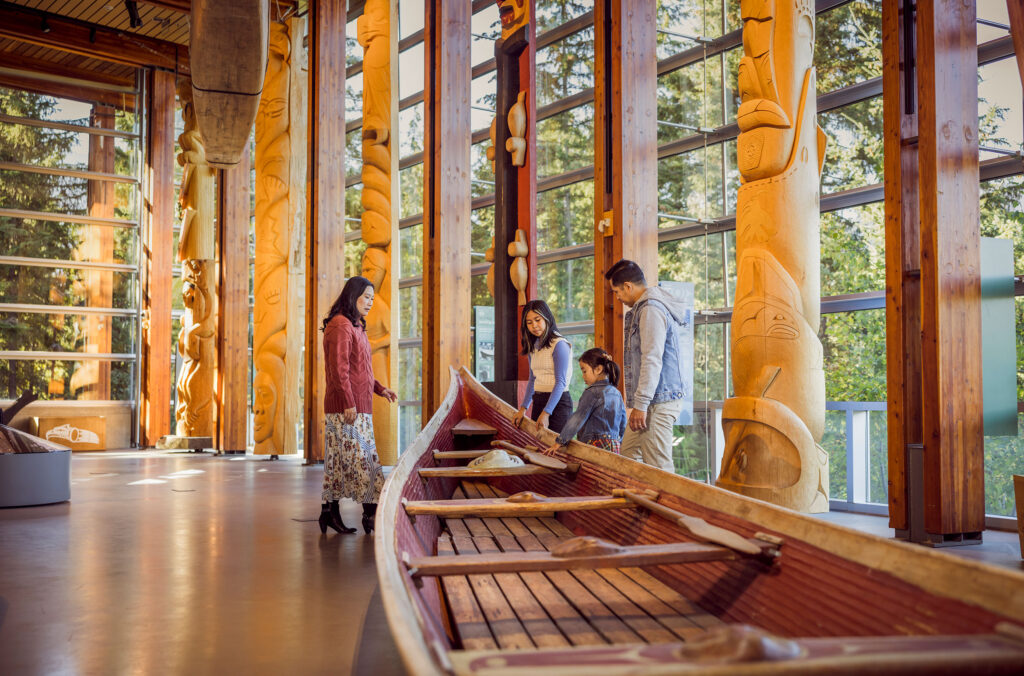
What Should I Expect at the SLCC
The SLCC is open every day of the week this summer, from 10 AM to 5 PM, but always check their hours of operation as they sometimes close for special events.
We would suggest joining a Cultural Ambassador for one of the hourly guided tours, which include:
- A hand drum welcome song
- Inspiring fifteen-minute film
- Guided exhibit tour by Cultural Ambassadors from Squamish Nation and Lil’wat Nation
The Centre has four main parts. There’s the Great Hall, the largest room, which includes the canoes, house posts, weavings and large informational panels. On that level, there’s also a small theatre and the What We Treasure gallery.
Upstairs is where you’ll find the rotating exhibits and access to the outside, which has an Istken (traditional, earthen pit house) and Longhouse. Downstairs in the building is where you’ll find the gift shop, cafe and also the Istken Hall, which is often used for events.
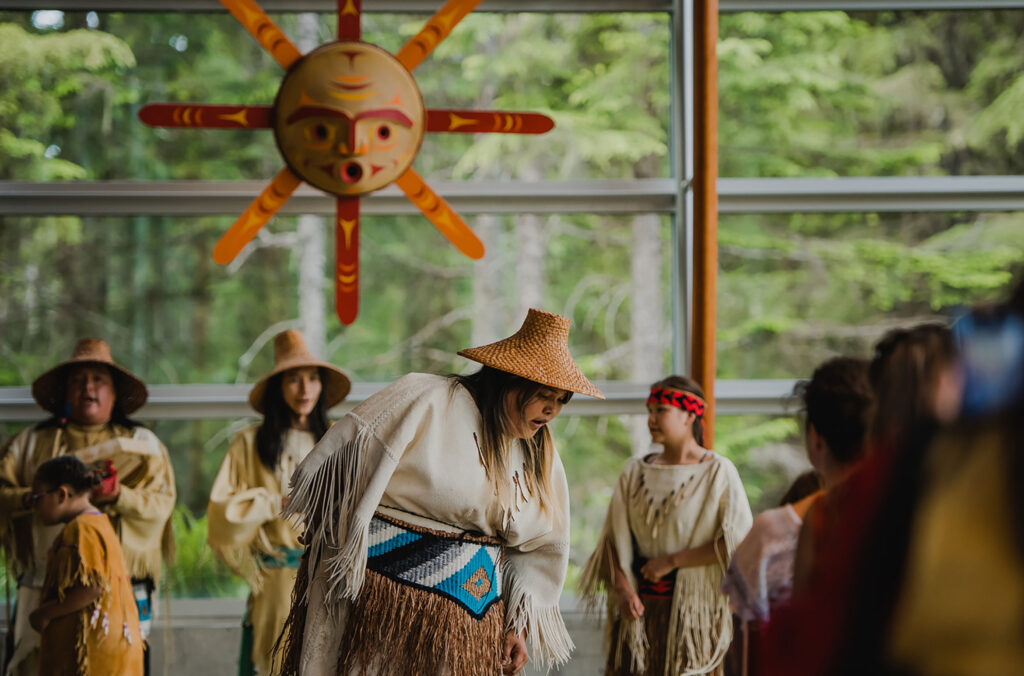
The guided tours include areas within the Great Hall, their permanent exhibit, called What We Treasure, in gallery one, and their rotating current exhibit(s). At different times of the year, they also offer tours of some of their rotating exhibits, and in the summer, look out for their Interpretive Forest Tour (outside along the Salish Stroll), which typically happens at 3 PM.
What are the Current Exhibits at the SLCC?
Legends of the Land
Many First Nations communities, including the Squamish and Lil’wat Nations, were oral societies (the Squamish and Lil’wat created written languages in the 1970s). Therefore, storytellers had the important role of being historians for their community. Both nations have real/true stories based on major events and people that were pivotal to them. They also have myths or legends that were used to teach their morals and values to their children.
Unfortunately, when the flu and smallpox epidemic decimated their communities, many stories were lost. From 1881 to 1949, children were forcibly removed from their parents’ homes and sent to residential schools, which meant even more stories were lost or altered. Exhibits at the SLCC are integral to regaining what was lost.
“We were requested by our Elders to learn and share more about our stories,” curator Mixalhítsa7 Alison Pascal shares. “They’re vital to knowing and sharing who we are, where we’re from and all the possibilities available to us.”
The exhibit Legends of the Land / Sx̱wex̱wiy̓ám̓ tiná7 tl’a temíxw / ptakwlh ti tmicwa shares how traditional knowledge and history were passed down from generation to generation through stories. When I visited, I went on a tour of this exhibit, which happens daily at 11 AM throughout the summer.
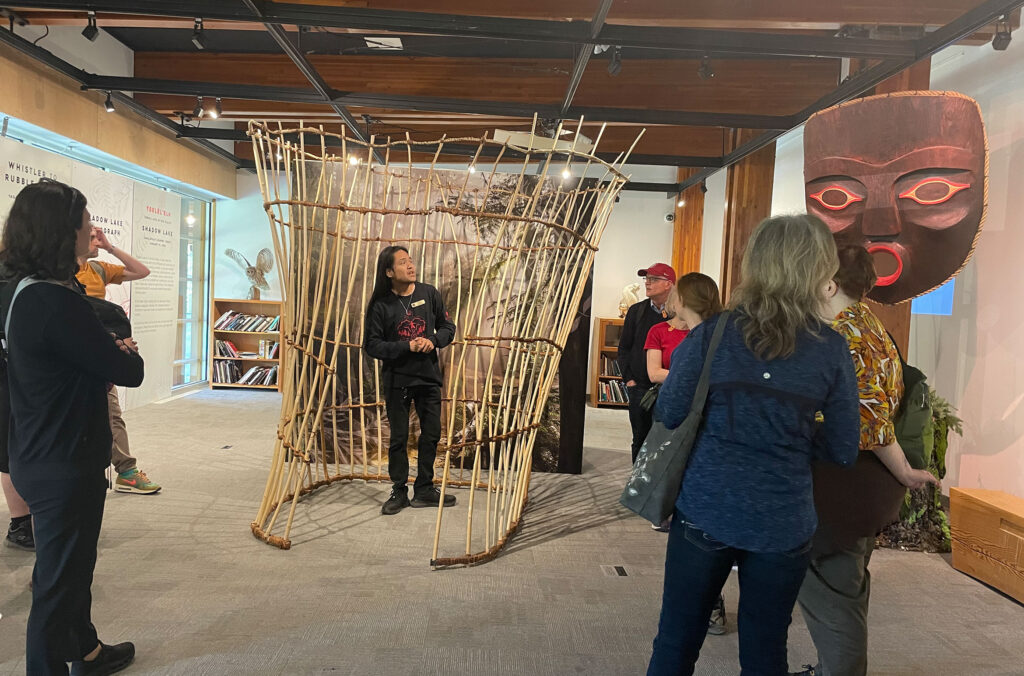
Our group’s Cultural Ambassador told the tale of Kál̓kalilh, a giant cannibal woman known as the “Wild Woman of the Woods” who came out at night and stole naughty children. It was an example of one of the teachings they gave to children in story form, that being out in the forest, alone at night, was not a good idea.
We were then left to explore the artwork, petroglyphs and pictographs, which showcased some of these stories in situ. There’s a wonderful set of panels about how they use animal traits to teach morals and values. There’s also mention of sasquatch sightings…
Are There Events and Workshops at the SLCC?
Yes! The Centre hosts craft workshops (at an additional cost) where a Cultural Ambassador will guide you through crafting an item significant to one of the Nations, like a cedar paddle rattle, a buckskin medicine bag, a braided leather cuff, a drum or a dreamcatcher.
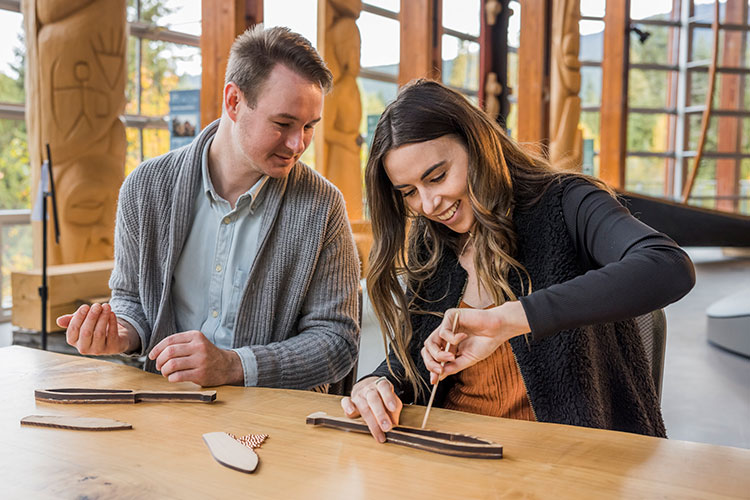
They also participate in Whistler-wide events like Nourish, Whistler Children’s Festival and the Fire & Ice Shows during the winter.
Check the SLCC’s events page for what’s happening when you visit.
National Indigenous History Month: June
June is National Indigenous History Month in Canada, and the perfect place to learn and celebrate Indigenous culture in Whistler is the SLCC. Find out what’s happening on their dedicated webpage.
National Indigenous Peoples Day: June 21
June 21 is National Indigenous Peoples Day, and the SLCC hosts vibrant events that celebrate Indigenous culture. From fashion shows to comedy, live music and artist demos, take a look at the full schedule of incredible events on the SLCC’s event page.
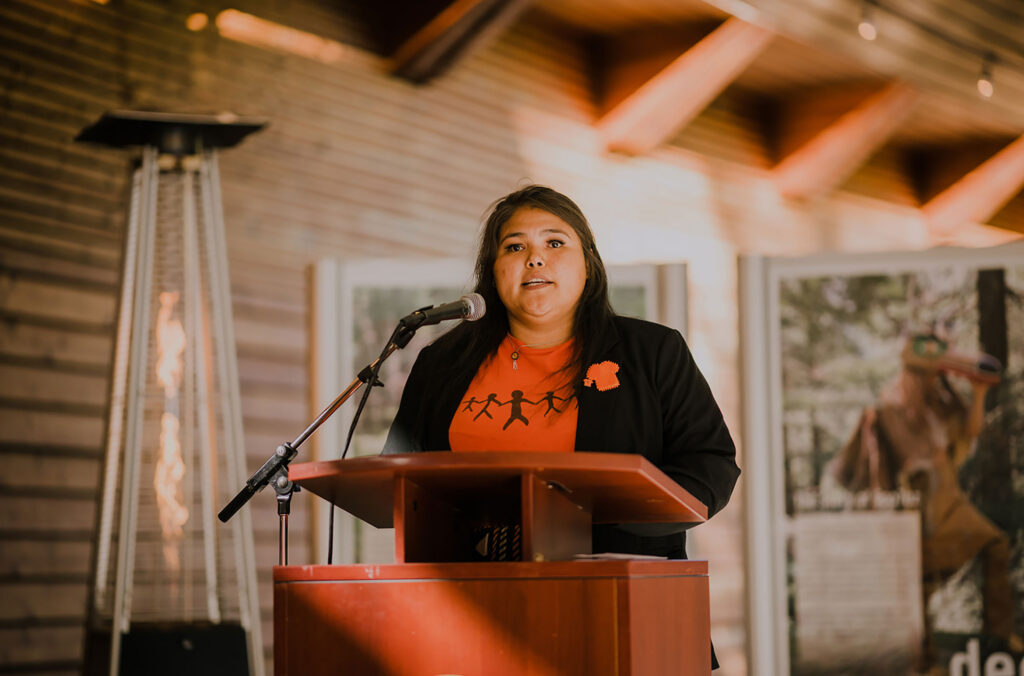
National Day for Truth and Reconciliation: September 30
September 30 is National Day for Truth and Reconciliation, which recognizes the tragic history and ongoing legacy of residential schools. The SLCC is a place to listen, learn and reflect on the intergenerational harm that residential schools caused Indigenous families and communities, and to honour those who have been affected by this injustice. Find out what’s happening on the SLCC’s page.
What’s New at the SLCC?
The panels and exhibits at the SLCC are always evolving. Recently, over 250 community members came together to read through and advise on updates to the existing content. The result is the addition of more traditional names, stories and histories, which are being displayed on new storyboards throughout the Centre.
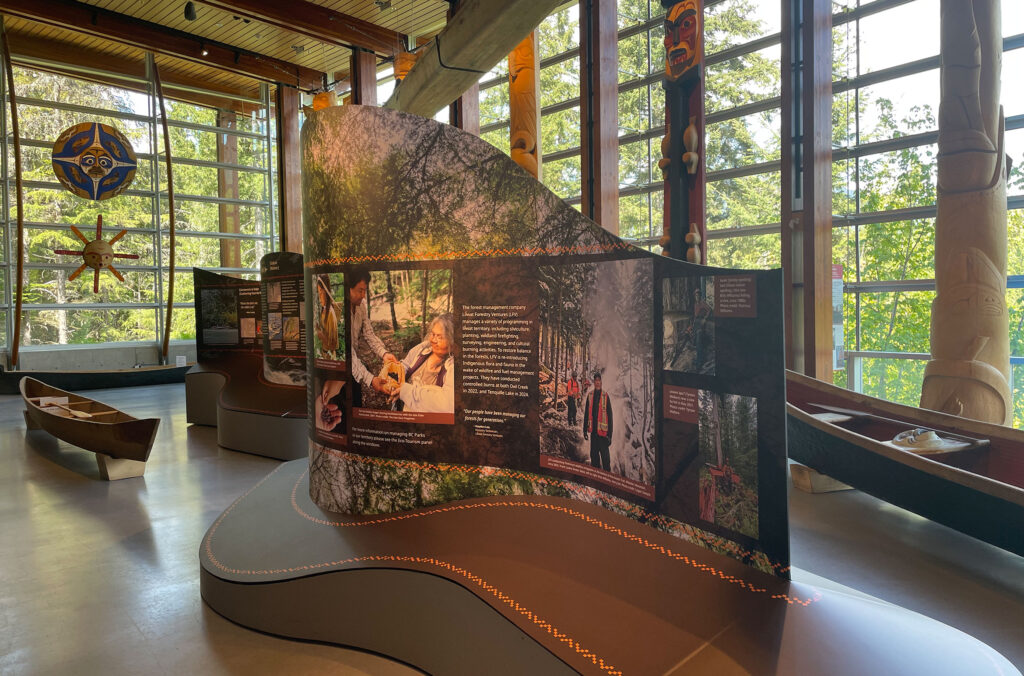
A number of newly repatriated items are also now on display at the SLCC, emphasizing the Centre’s commitment to cultural revitalization and education, as a path toward reconciliation.
New Vendor Markets featuring artists and creatives from the Squamish Nation and Lil’wat Nation are happening on the first Saturday of every month, on June 7, July 5, August 2 and September 6, along with June 21.
Does the SLCC have a Cafe?
Yes, there certainly is! The Thunderbird Cafe serves up Indigenous inspired food with local, fresh ingredients and a modern twist. Bannock Tacos, Venison Chilli and Salmon Chowder are some of the favourites on the menu, as well as their sweet Bannock Donuts.
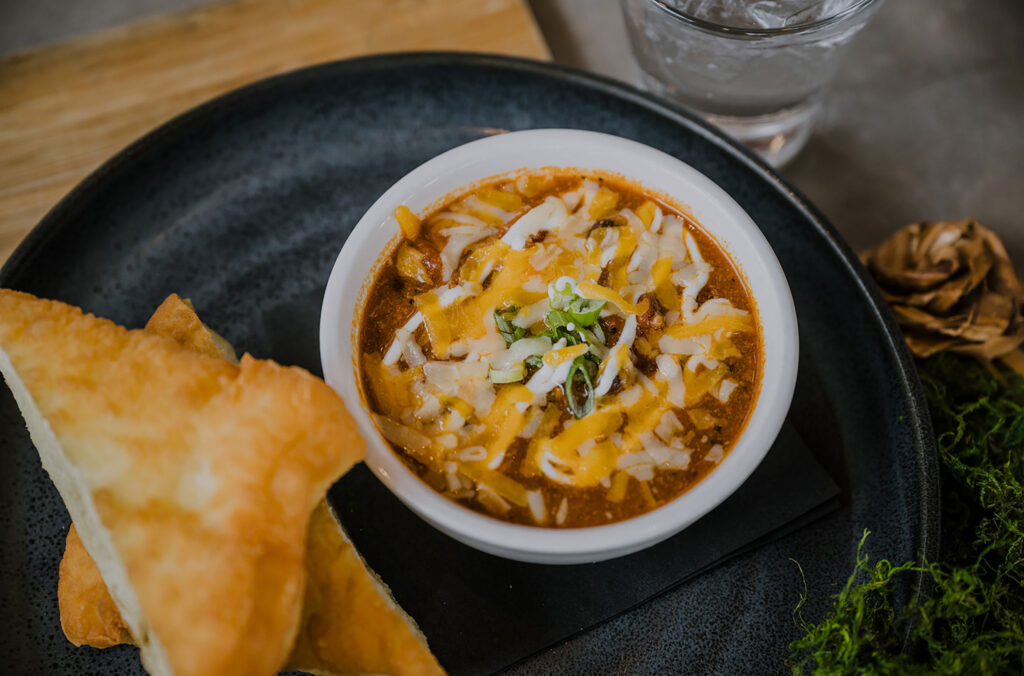
They make espresso-based coffees using Fair Trade Spirit Bear Coffee and have a range of teas. It’s a calm, comfortable place to relax and enjoy. It’s typically open from 10 AM to 4 PM.
Does the SLCC have a Gift Shop?
The SLCC’s gift shop is my favourite place to shop for a unique, keepsake or gift. It offers a varied collection of authentic Indigenous handcrafted artwork, jewellery and pottery along with home decor, books, blankets, clothing, accessories and keepsakes.
It’s fun to speak with the Cultural Ambassadors who can tell you about specific pieces and help advise you on that special piece!
View this post on Instagram
How Much Does it Cost to Visit the SLCC?
Adult tickets are $25, children (ages 6 to 18) are $12, and little ones under five are free. If you go more than twice in one year, it’s worth buying a membership, which also gets you discounts at the cafe and gift shop, as well as 50% off tickets for your guests.
If you visit both the SLCC and Audain Art Museum, purchasing the Cultural Pass saves you some dollars!
It’s worth noting that the SLCC is a non-profit registered charity, an Indigenous-owned organization, and employs over 90% Indigenous Ambassadors. All proceeds are invested into meaningful employment, training (including Indigenous Youth Ambassador Program) and cultural revitalization programs for the Sḵwx̱wú7mesh Úxwumixw (Squamish Nation) and Li̓l̓wat7ul (Lil’wat Nation), through the SLCC.
How Long Do You Spend at the SLCC?
Although timing will differ from person to person depending on how deep you like to explore, we would say two to three hours. However, if you don’t have quite that long, I’d still recommend going for a short visit as it’s an inspiring place.
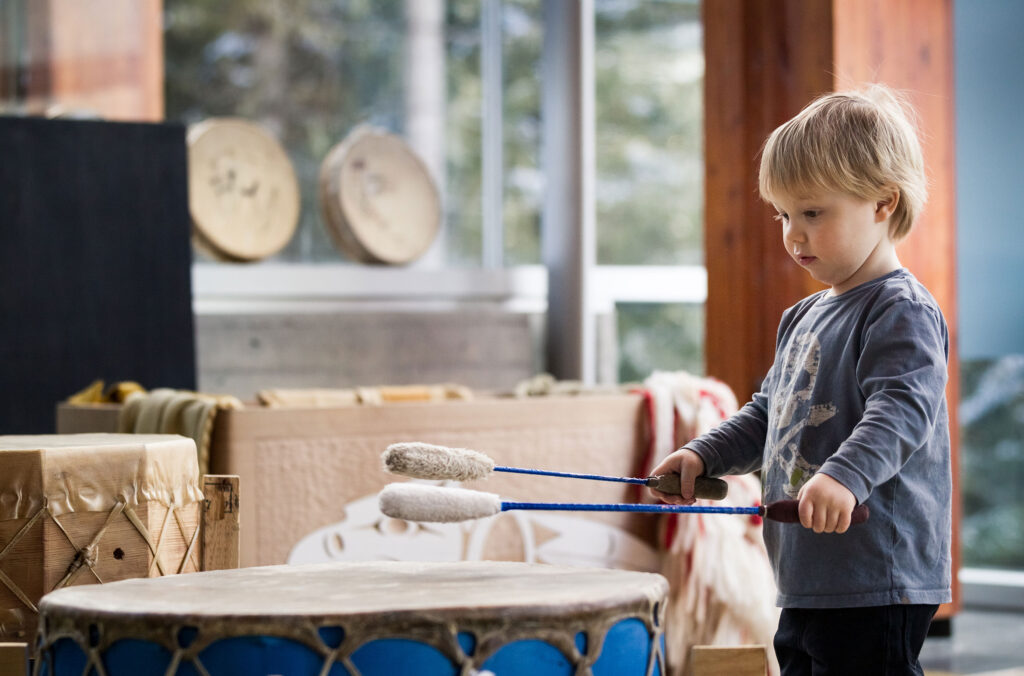
Is the SLCC a Place for Families?
Yes! Learning about the Indigenous peoples of the land is for everyone. Kids love the sounds of the drums during the welcome song, as well as the bright and engaging exhibit items and artwork. Exploring the outside Istken is also a fun part of the experience, plus those bannock donuts go down a treat!
It also gives parents and caregivers the chance to have a conversation (that’s appropriate to their child’s age) about a darker part of Canada’s history that shouldn’t be overlooked.
Is the SLCC Wheelchair Accessible?
The SLCC is wheelchair accessible (there is an elevator to move between floors), and they have wheelchairs available onsite for guests to use. Please contact the SLCC prior to your visit or ask for a chair at the admissions desk upon arrival.
View this post on Instagram
Where is the SLCC?
The Squamish Lil’wat Cultural Centre is located in Whistler, British Columbia, at 4584 Blackcomb Way in Whistler’s Upper Village. If you’re staying in Whistler Village, it’s walkable, or if you’re coming from further afield, it’s easiest to park in Day Lot 5 and follow the Valley Trail to the Centre. There’s disabled parking in the small lot at the entrance to the Centre.
A visit to the Squamish Lil’wat Cultural Centre should be on every visitor’s to-do list. Understanding the history of the land we enjoy gives us a deeper connection to it and shows respect and regard to the Indigenous people, the original stewards of this land.
Save up to 20% on lodging with Whistler.com this summer. Stay & Golf from $289 CAD per person, per night or Stay & Bike from $179 CAD per person, per night. Sign up to be a Rewards Member (for BC and WA residents only) and receive a FREE $50 CAD activity voucher on stays of 3+ nights.
You can also win a summer trip to Whistler with the Escape the Ordinary contest!
